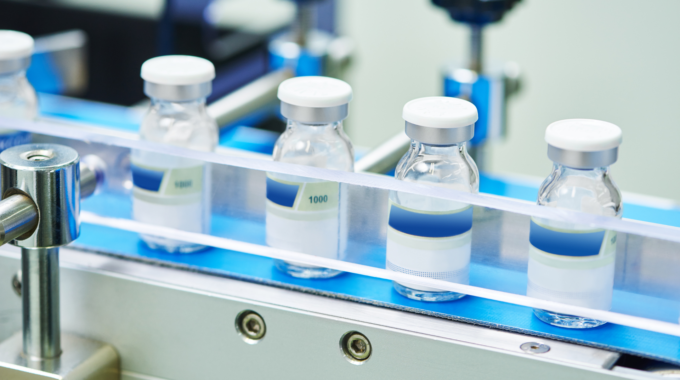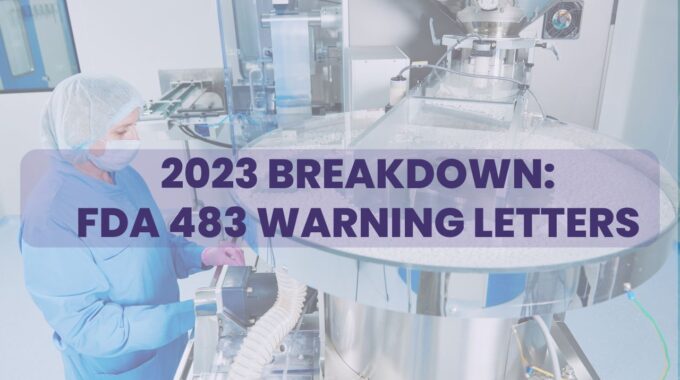What is a Deviation? A deviation should not be viewed as your “worst nightmare”. Instead,…

Single Use vs Traditional Bioreactors
Bioreactors – The heartbeat of Biopharmaceutical Manufacturing
For many biopharmaceutical manufacturing companies, the bioreactor is central to its operations. The bioreactor is where the biological component is created through the action of specially engineered cells.
These cells are designed to output as much of a particular component as possible. Bioreactors are used to sustain the growth of cells. More cells translates to more final product.
Single Use vs Traditional Bioreactors
In biopharmaceutical manufacturing, single use bioreactors are becoming an increasingly popular choice over traditional bioreactors.
Traditional bioreactors consist of an internal cavity surrounded by a metal shell, both of which are made of stainless steel.
In single use bioreactors, the internal cavity is replaced by a polymer (plastic) bag that is housed within a stainless steel outer shell.
The mission of both styles of bioreactors are the same – to maximize cell growth and production output. However, there are many pros and cons to each type of bioreactor.
Capital Costs
Traditional bioreactors made of stainless steel are energy intensive to build. Maintaining the extensive stainless steel piping network needed to support the bioreactor is also an ongoing cost.
Single use bioreactors offer a more cost effective way to lower upfront capital costs. Since the polymer bags are single use, there is no need for as much stainless steel piping used for cleaning and steaming the bioreactor in place. As such, ongoing costs can be greatly reduced going forward.
Operational Costs
Traditional stainless steel bioreactors typically use standardized equipment that require fewer spare parts. Single use bioreactors, on the other hand, are associated with higher ongoing operating costs for bags, manifolds, and other accessories.
For larger more established facilities with significant resources, traditional bioreactors may be the way to go. For newer startups, you can skip the high capital investment required for traditional bioreactors, and gain the flexibility of single use bioreactors sooner.
Maintenance Costs
Not only are traditional bioreactors more expensive upfront to source, build and install, they also require complex highly integrated equipment systems that are challenging to maintain. That’s where single use bioreactors can provide significant cost reductions for newer companies looking to scale rapidly.
Since the internals of single use bioreactors are disposed off after use, the Cleaning-In-Place (CIP) and Steaming-In-Place (SIP) demands are much lower than that of traditional bioreactors.
Turnaround Time
CIP and SIP cycles add a considerable amount of time and effort to the daily operation of traditional stainless steel bioreactors. CIP and SIP skids and their associated chemicals need to be maintained and serviced. Components need to be broken down and re-assembled after each cycle.
For single use bioreactors, internal polymer (plastic) components are simply discarded after each batch cycle, saving you considerably on time and effort in between batches.
Supply Chain Management
Since single use bioreactors rely on polymer consumables to operate, their operation can be susceptible to supply chain disruptions. With fewer polymer raw material suppliers available, facilities may become vendor dependent, making them vulnerable when issues in the supply chain arise.
For traditional stainless steel bioreactors, the supply chain is more mature with established suppliers. CIP and SIP chemicals needed to operate traditional bioreactors can be ordered in large bulk quantities and stored safely for long term use. Stainless steel spare parts are widely available from a variety of suppliers, lowering the impact from potential supply chain disruptions.
Contamination Risk
Single use bioreactors have a closed system design. As such, the risk of microbial contamination is much lower than that with traditional bioreactors. With traditional bioreactors, due to the interconnected processes and cleaning systems, there is a higher risk of microbial contamination.
Cell Growth
With single use bioreactors, leachables and extractables from the use of polymer bags have been shown to significantly hinder cell growth – the exact opposite of what you want a bioreactor to do. Biopharmaceutical manufacturers need to create and qualify “leachables and extractables” profiles to determine the impact of leachables to cell growth and overall operations. You should also limit single-use plastic to upstream manufacturing processes and utilize robust downstream processing to eliminate any trace leachables that remain after processing.
For traditional bioreactors, there is no direct risk from leachables. However, it is important to thoroughly clean all internal surfaces using validated CIP and SIP cycles to remove any cleaning chemical residue that could adversely affect cell growth.
Scalability
Single use bioreactors are seen as more suitable for smaller batches for smaller target populations. For newer companies, this is a plus when just getting started. Traditional stainless steel bioreactors see greater use with mass production of a single product where efficiencies can be optimized at scale.
Keeping Your Options Open
When it comes to bioreactors, there isn’t a one size fits all approach. Facilities need to carefully weigh the upfront capital investment and ongoing operational costs necessary to build and maintain a bioreactor. For newer companies, the smaller upfront costs of single use bioreactors are attractive. However, the higher ongoing costs of replacing the polymer consumables need to be borne in mind.
For more established companies, switching over from traditional bioreactors to single use bioreactors, needs to be carefully considered. The risks from microbial contamination risks drop when using single use bioreactors, due to their closed system. However, the risk of impact to continuous operation in the event of a disruption to the supply chain system needs to be carefully considered as well.
In the end, the best bioreactor for your manufacturing facility will output cells with the highest concentration of required product at a competitive cost.



